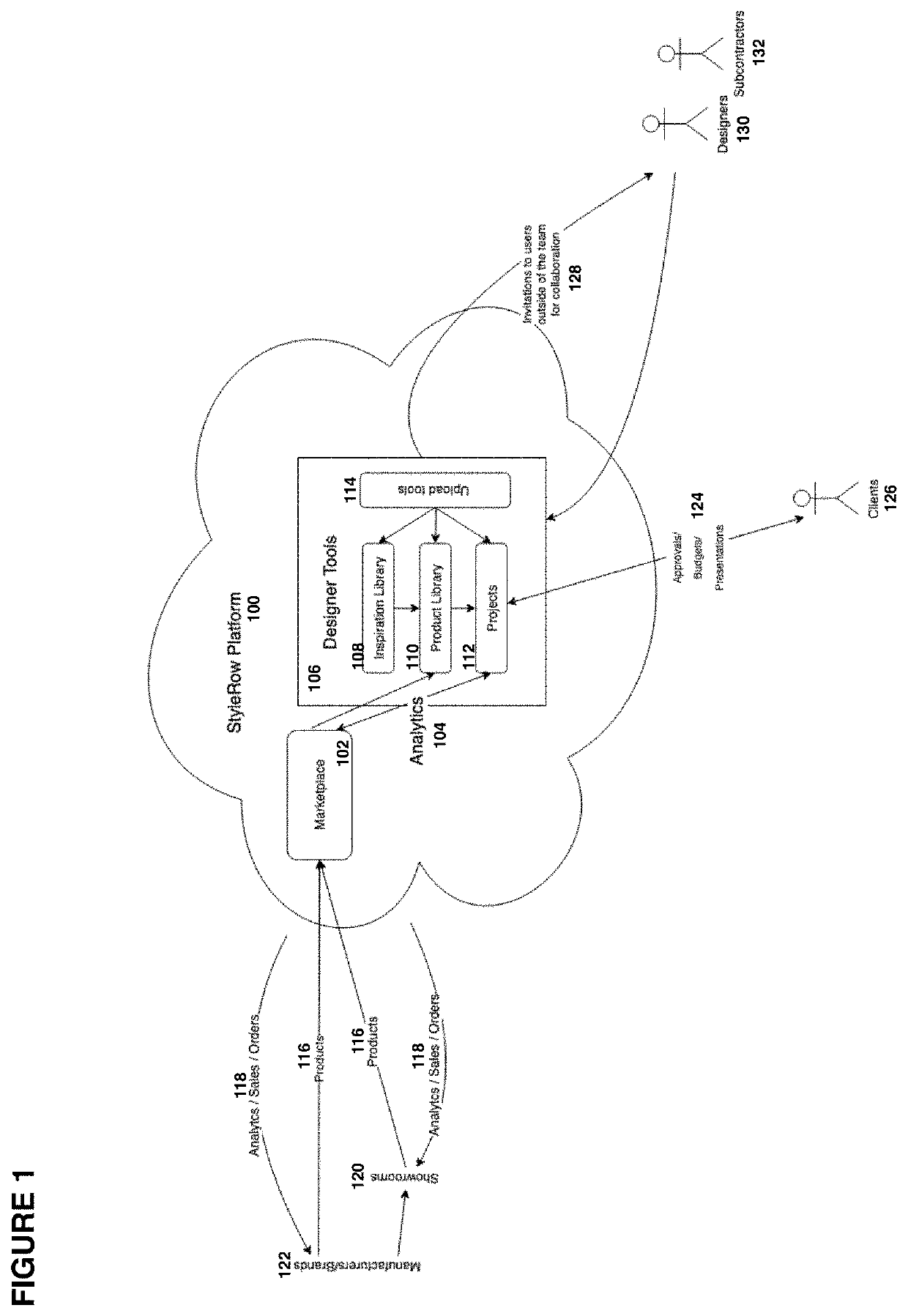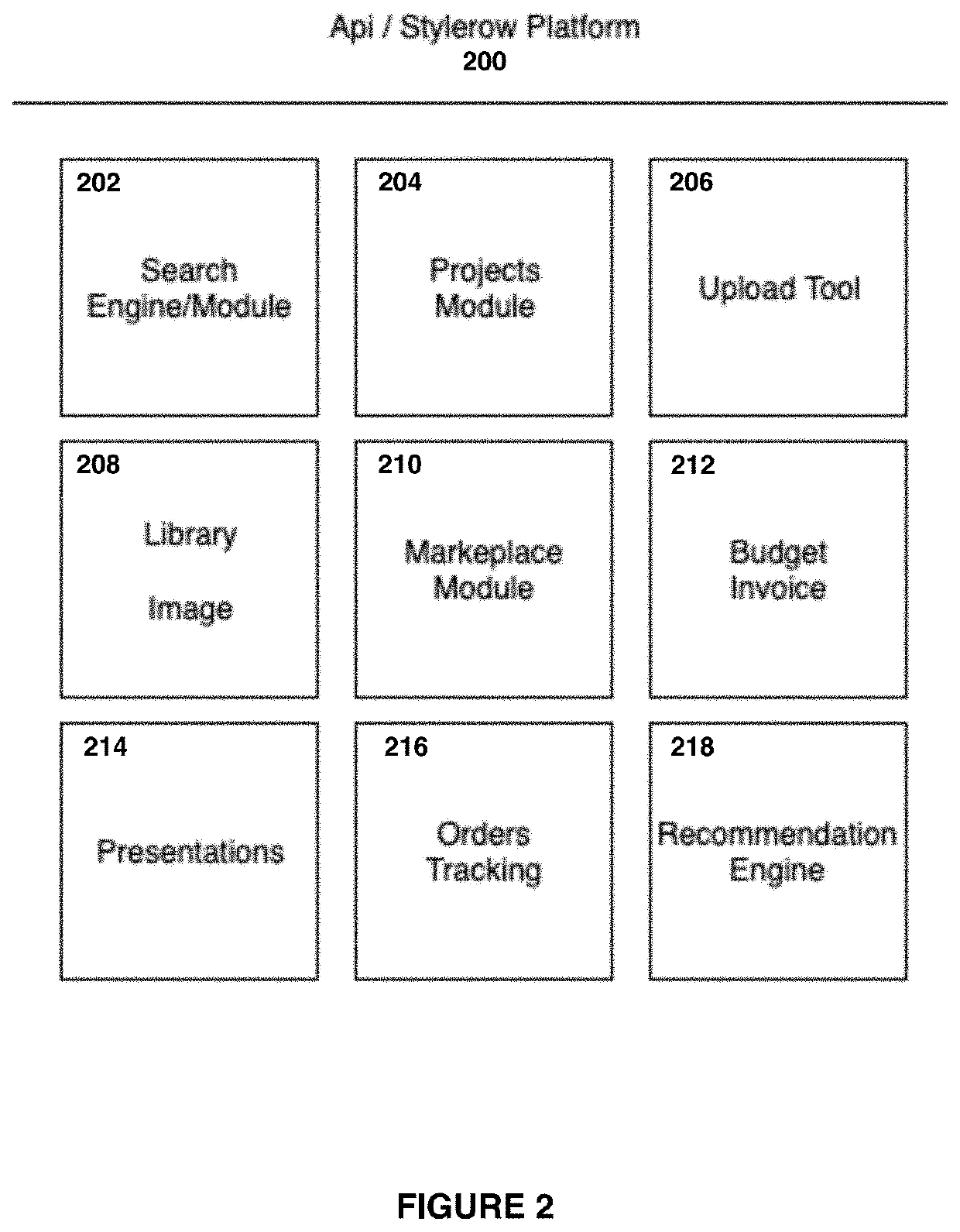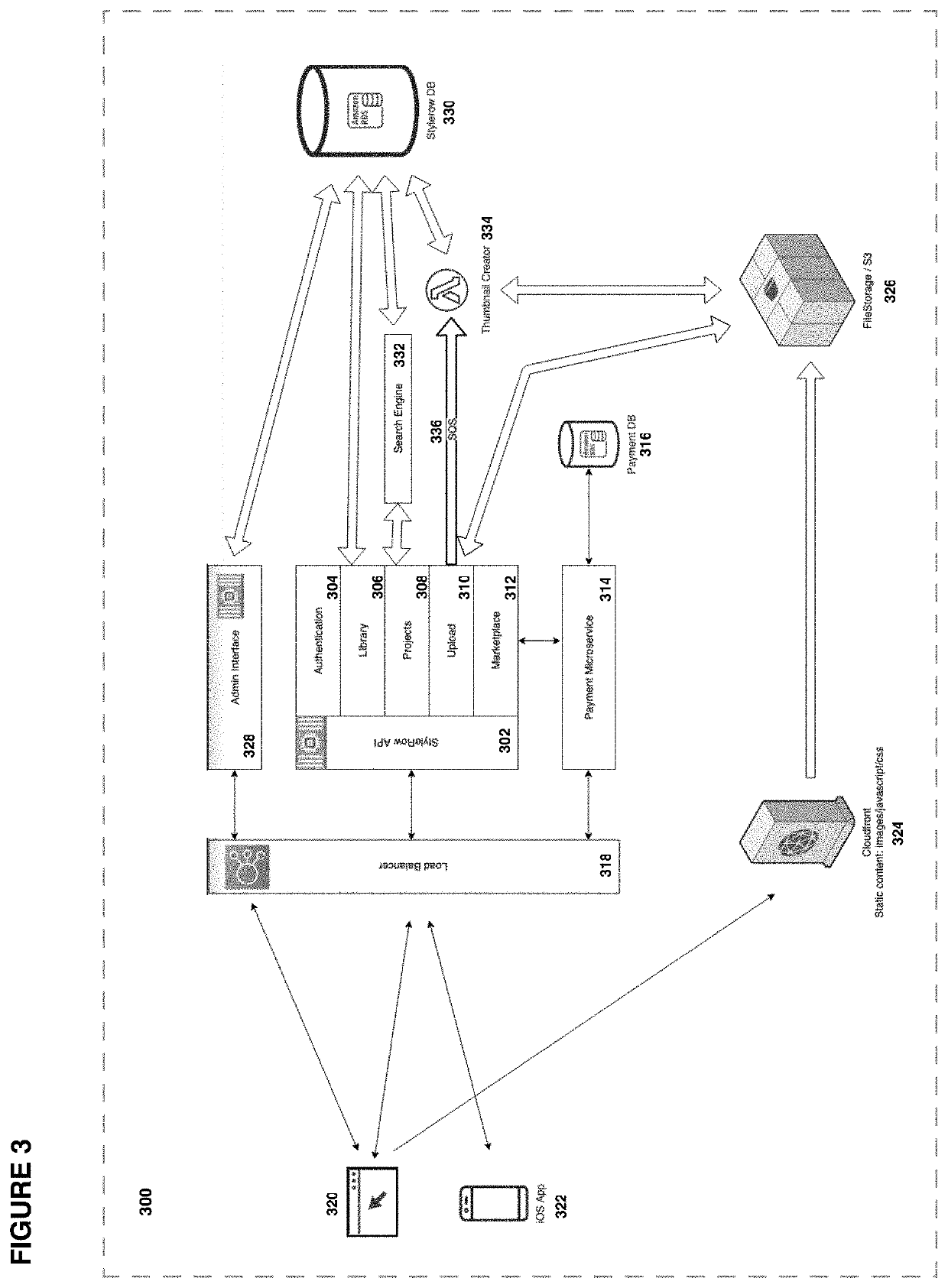System and method for the design industry that enables creative teams to design, collaborate and connect with clients and track and manage progress of each client project providing client status to all interested parties
a technology of design industry and system, applied in the field of system and method for the design industry, can solve the problems of requiring too much time, unable to meet the needs of clients,
- Summary
- Abstract
- Description
- Claims
- Application Information
AI Technical Summary
Benefits of technology
Problems solved by technology
Method used
Image
Examples
Embodiment Construction
[0082]FIG. 1 is a diagram of user flow through the platform of the present invention. In accordance with the preferred embodiment of the present invention, the platform 100 consists of an online marketplace 102, analytics engine 104 and designer tools 106. The online marketplace 102 is used by manufacturers and brands 122 as an online extension of their physical showrooms 120, whereby they can market and sell their physical products 116 on the platform marketplace 102. The platform marketplace 102 provides feedback to manufacturers and brands 122 by providing analytics, sales and orders 118 from the platform 100. Items from the marketplace can be stored in the product library 110 within the designer tools 106. The marketplace 102 also shares analytics data 104 with the projects module 112 of the designer tools 106. The projects module 112 features project approvals, budgets and presentations 124 that can be viewed by the client 126. Designer tools 106 consist of an inspiration libra...
PUM
 Login to View More
Login to View More Abstract
Description
Claims
Application Information
 Login to View More
Login to View More - R&D
- Intellectual Property
- Life Sciences
- Materials
- Tech Scout
- Unparalleled Data Quality
- Higher Quality Content
- 60% Fewer Hallucinations
Browse by: Latest US Patents, China's latest patents, Technical Efficacy Thesaurus, Application Domain, Technology Topic, Popular Technical Reports.
© 2025 PatSnap. All rights reserved.Legal|Privacy policy|Modern Slavery Act Transparency Statement|Sitemap|About US| Contact US: help@patsnap.com



